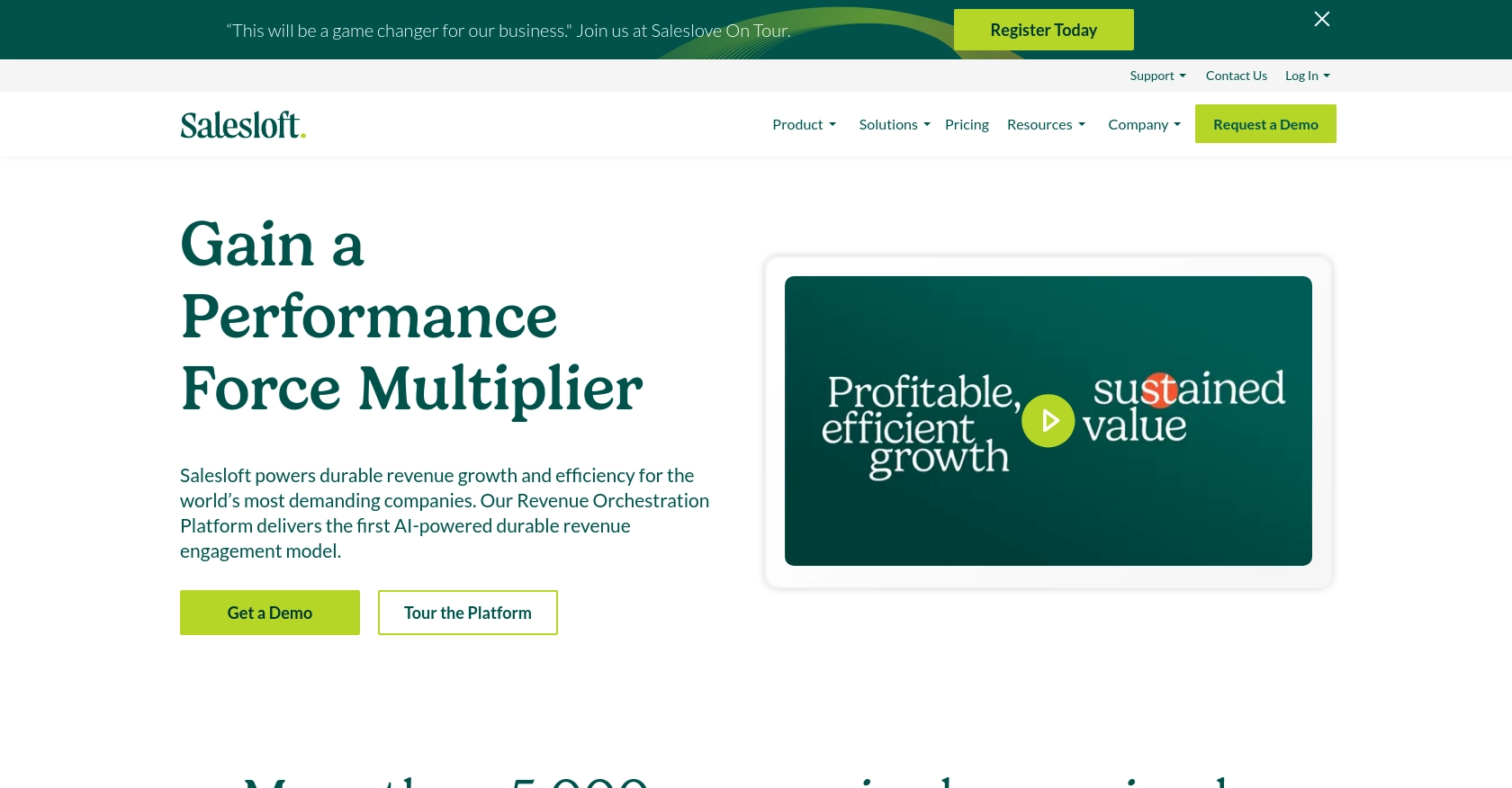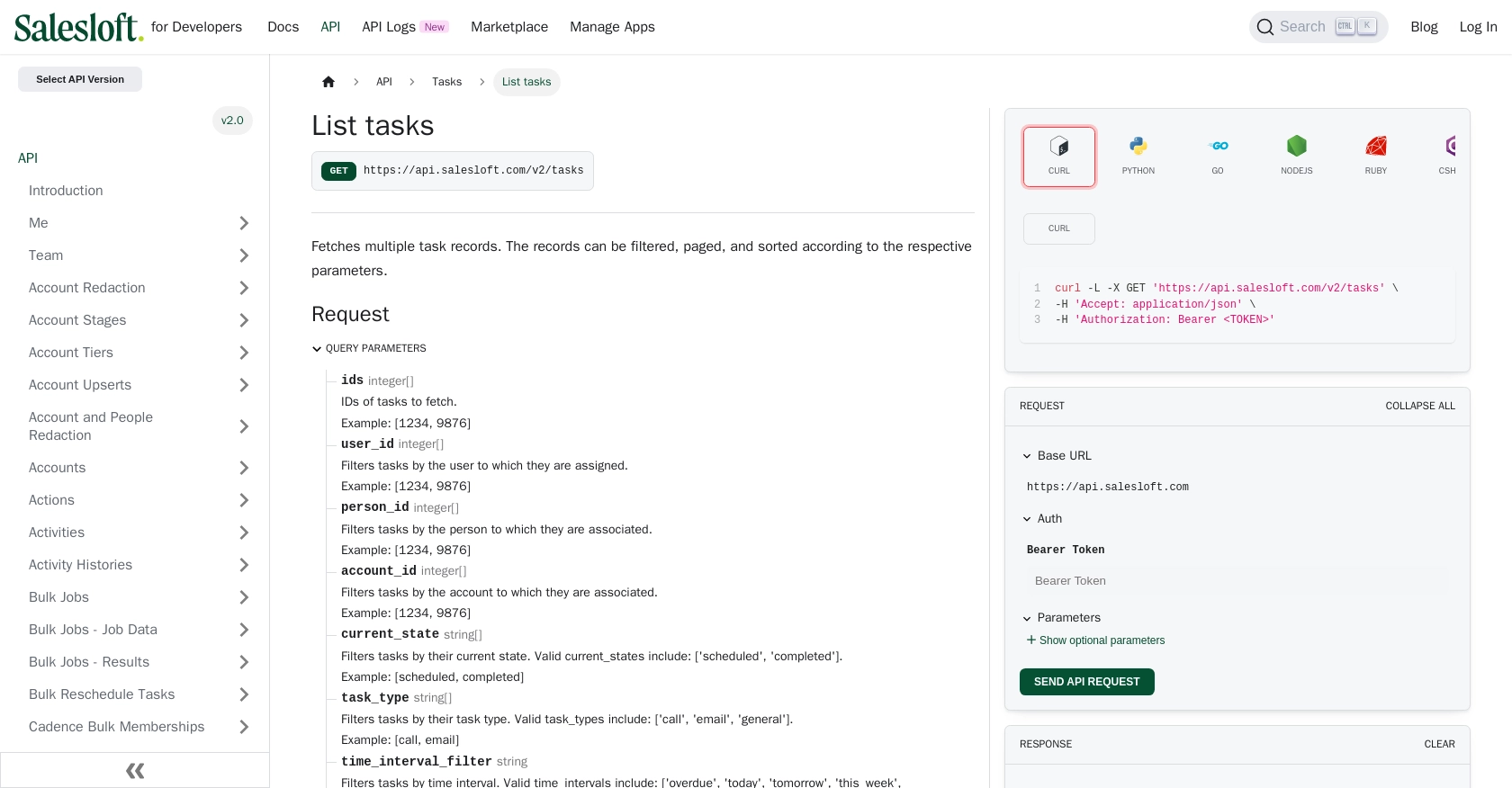How to Get Tasks with the Salesloft API in PHP

Introduction to Salesloft API Integration
Salesloft is a powerful sales engagement platform that empowers sales teams to enhance their communication and streamline their workflows. With features like email tracking, call logging, and task management, Salesloft enables sales professionals to connect with prospects more effectively and close deals faster.
Integrating with the Salesloft API allows developers to automate and manage sales tasks efficiently. By accessing task data programmatically, developers can create custom solutions that enhance productivity. For example, a developer might use the Salesloft API to retrieve and analyze sales tasks, enabling better tracking of sales activities and improving team performance.
Setting Up Your Salesloft Test Account for API Integration
Before you can start interacting with the Salesloft API, you'll need to set up a test account. This will allow you to safely experiment with API calls without affecting live data. Salesloft provides a sandbox environment for developers to test their integrations.
Creating a Salesloft Sandbox Account
If you don't already have a Salesloft account, you can sign up for a free trial on the Salesloft website. This trial account will give you access to the necessary features to test API interactions.
- Visit the Salesloft website and click on the "Sign Up" button.
- Fill in the required information to create your account.
- Once your account is created, log in to access the Salesloft dashboard.
Creating an OAuth App in Salesloft
Salesloft uses OAuth 2.0 for authentication, which requires you to create an OAuth app. This app will provide the credentials needed to authenticate API requests.
- Navigate to Your Applications in the Salesloft dashboard.
- Select OAuth Applications and click on Create New.
- Fill out the necessary fields, including the application name and redirect URI.
- Click Save to create your app. You will receive a Client ID and Client Secret.
Obtaining Authorization Code and Access Tokens
With your OAuth app set up, you can now obtain the authorization code and access tokens needed for API access.
- Generate a request to the authorization endpoint:
https://accounts.salesloft.com/oauth/authorize?client_id=YOUR_CLIENT_ID&redirect_uri=YOUR_REDIRECT_URI&response_type=code - Replace
YOUR_CLIENT_IDandYOUR_REDIRECT_URIwith your app's details. - Authorize the app when prompted. Upon approval, you'll receive an authorization code.
- Exchange the authorization code for access and refresh tokens by making a POST request:
POST https://accounts.salesloft.com/oauth/token { "client_id": "YOUR_CLIENT_ID", "client_secret": "YOUR_CLIENT_SECRET", "code": "AUTHORIZATION_CODE", "grant_type": "authorization_code", "redirect_uri": "YOUR_REDIRECT_URI" } - Store the access_token and refresh_token securely for future API requests.
With your Salesloft test account and OAuth app configured, you're ready to start making API calls to manage tasks programmatically.

sbb-itb-96038d7
Making API Calls to Retrieve Tasks from Salesloft Using PHP
To interact with the Salesloft API and retrieve tasks, you'll need to use PHP to make HTTP requests. This section will guide you through setting up your PHP environment and making the necessary API calls to fetch task data.
Setting Up Your PHP Environment for Salesloft API Integration
Before making API calls, ensure you have PHP installed on your machine. You'll also need the cURL extension enabled to handle HTTP requests.
- Verify PHP installation by running
php -vin your terminal. - Ensure the
cURLextension is enabled in yourphp.inifile.
Installing Required PHP Dependencies
To simplify HTTP requests, you can use the Guzzle library. Install it via Composer:
composer require guzzlehttp/guzzleFetching Tasks from Salesloft API Using PHP
With your environment set up, you can now write a PHP script to fetch tasks from the Salesloft API. Below is an example of how to do this:
require 'vendor/autoload.php';
use GuzzleHttp\Client;
$client = new Client();
$accessToken = 'YOUR_ACCESS_TOKEN';
$response = $client->request('GET', 'https://api.salesloft.com/v2/tasks', [
'headers' => [
'Authorization' => 'Bearer ' . $accessToken,
'Accept' => 'application/json'
]
]);
$data = json_decode($response->getBody(), true);
foreach ($data['data'] as $task) {
echo "Task ID: " . $task['id'] . "\n";
echo "Subject: " . $task['subject'] . "\n";
echo "Due Date: " . $task['due_date'] . "\n";
echo "State: " . $task['current_state'] . "\n\n";
}
Replace YOUR_ACCESS_TOKEN with the access token obtained during the OAuth setup. This script uses Guzzle to send a GET request to the Salesloft API endpoint for tasks. It then decodes the JSON response and prints out task details.
Handling API Response and Errors
After making the API call, it's essential to handle potential errors. The Salesloft API may return various HTTP status codes indicating success or failure:
- 200 OK: The request was successful, and the tasks are returned.
- 403 Forbidden: Authentication failed. Check your access token.
- 404 Not Found: The requested resource does not exist.
- 422 Unprocessable Entity: Invalid request parameters.
Ensure you check the response status code and handle errors appropriately in your application.
Verifying API Call Success in Salesloft Sandbox
To confirm that your API call is successful, log into your Salesloft sandbox account and verify that the tasks retrieved match the data in your test environment. This ensures that your integration is working as expected.

Conclusion and Best Practices for Salesloft API Integration in PHP
Integrating with the Salesloft API using PHP allows developers to efficiently manage and automate sales tasks, enhancing productivity and streamlining workflows. By following the steps outlined in this guide, you can successfully retrieve task data and incorporate it into your custom solutions.
Best Practices for Secure and Efficient Salesloft API Usage
- Secure Storage of Credentials: Always store your access and refresh tokens securely. Consider using environment variables or secure vaults to protect sensitive information.
- Handling Rate Limits: Be mindful of the Salesloft API rate limit of 600 requests per minute. Implement logic to handle rate limit responses and retry requests if necessary. For more details, refer to the Salesloft API Rate Limits documentation.
- Error Handling: Implement robust error handling to manage different HTTP status codes returned by the API. This ensures your application can gracefully handle failures and provide meaningful feedback to users.
- Data Standardization: When retrieving data from the API, consider transforming and standardizing fields to match your application's data model. This can simplify data processing and integration.
Enhance Your Integration Experience with Endgrate
While integrating with the Salesloft API can be a powerful way to enhance your sales processes, managing multiple integrations can become complex and time-consuming. Endgrate offers a unified API solution that simplifies integration management across various platforms, including Salesloft.
By leveraging Endgrate, you can save time and resources, allowing you to focus on your core product development. Build once for each use case and enjoy an intuitive integration experience for your customers. Visit Endgrate to learn more about how you can streamline your integration efforts.
Read More
- https://endgrate.com/provider/salesloft
- https://developers.salesloft.com/docs/platform/api-basics/oauth-authentication/
- https://developers.salesloft.com/docs/platform/api-basics/request-response-format/
- https://developers.salesloft.com/docs/platform/api-basics/filtering-paging-sorting/
- https://developers.salesloft.com/docs/platform/api-basics/rate-limits/
- https://developers.salesloft.com/docs/api/tasks-index/
Ready to get started?
